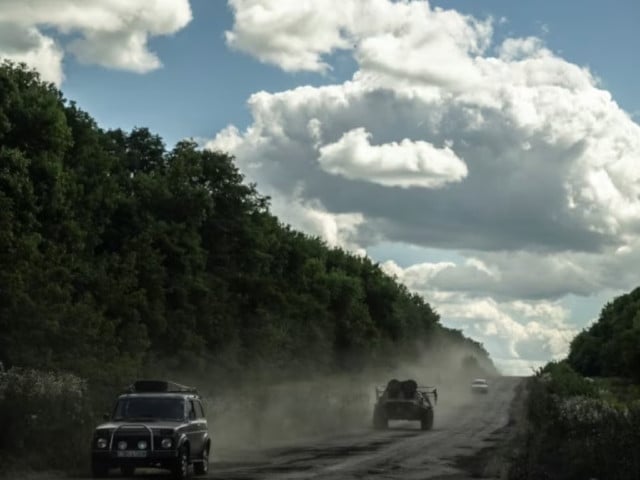Ukraine blindsided Moscow by pouring thousands of troops into the western Russian region of Kursk last week. The surprise operation has given Ukraine its biggest battlefield gains since 2022 after months on the back foot.
Kyiv’s account jarred with the picture painted by Russia where Major General Apti Alaudinov said Ukraine’s troops had been halted. In contrast, the defence ministry said attacks had been repelled at villages about 26 to 28 km (16 to 17 miles) from the border.
President Volodymyr Zelenskiy said Kyiv’s forces had rounded up Russian prisoners of war who could be swapped for captured Ukrainian fighters, touting what he described as an expanding “exchange fund”.
“Despite difficult and intense battles, our forces continue to advance in the Kursk region, and our state’s ‘exchange fund’ is growing. Seventy-four settlements are under Ukrainian control,” Zelenskiy said.
As shown in the video link, the Ukrainian leader asked his top commander, Oleksandr Syrskyi, to develop the next “key steps” in the operation.
“Everything is being executed according to the plan,” Syrskyi replied, without elaborating.
Kyiv has disclosed few details about its plans, in stark contrast with last year’s counteroffensive that was vaunted for months in advance and failed to breach well-prepared Russian defensive lines.
A week after the start of the shock offensive, Kursk regional governor Alexei Smirnov called on residents to show patience and character.
“I’ll say it straight: the crisis has not yet been overcome,” he wrote on social media.
Russian President Vladimir Putin has vowed to hit back at Ukraine with a “worthy response” and accused Kyiv’s “Western masters” of helping Ukraine.
At the United Nations, Russia called out Kyiv’s allies for not condemning the incursion.
US President Joe Biden, in his first substantive comments, said Washington is in constant contact with Kyiv about the operation, although the White House said earlier it was not engaged in any aspect of planning or preparation.
“It’s creating a real dilemma for Putin,” Biden said.
Ukraine has cast the operation as defensive, saying its troops have taken control of areas Russia has used to launch more than 2,000 cross-border strikes since June.
“Ukraine is not interested in taking the territory of the Kursk region, but we want to protect the lives of our people,” foreign ministry spokesman Heorhii Tykhyi said.
No Setup For Now
Russian forces have been trying to advance for months on multiple fronts in the eastern Donetsk region, taking advantage of their greater troop numbers to inch towards cities like the Kyiv-held logistics hub of Pokrovsk.
Tykhyi said: “It should be emphasized that the (Kursk) operation … helps the front line because it does not allow Russia to transfer additional units to the Donetsk region, complicates its military logistics.”
For now, there is no sign of a letup for Ukraine in the east where Kyiv’s military said earlier it had recorded the largest number of battles with Russian forces on the Pokrovsk front in a single day since before the Kursk incursion.
Ukraine has noted Russian troops moving from the south to other areas, likely including Kursk, this week, military spokesman Dmytro Lykhoviy told Reuters.
He said the number of attacks had not decreased as a result and it was too early to conclude.
On a trip to Kyiv on Tuesday, Lithuanian Defence Minister Laurynas Kasciunas said Russia was moving troops from its Baltic exclave of Kaliningrad to reinforce Kursk.
Pasi Paroinen, an analyst with the Black Bird Group, said on Monday that Russia had mostly relied on nearby military units to try to push back Ukrainian forces.
“Russians should have enough reserves so that they should not be forced to weaken the ‘Centre’ group of forces which is currently pressuring the Ukrainian lines near Toretsk and Pokrovsk,” he said.
Serhii Kuzan, chairman of the Ukrainian Security and Cooperation Center, a non-governmental research group, said the Ukrainian assault was an “asymmetrical” response to a positional war of attrition Russia was trying to impose to exhaust Ukraine’s troops and resources.
The military on Tuesday restricted the movement of civilians within a 20-km (12-mile) zone of the northeastern border area due to an “increase in the intensity of hostilities” and the activation of Russian sabotage and reconnaissance groups.
On Monday, Russia’s regional governor in Kursk said Ukraine’s forces had taken control of 28 settlements in an incursion that was about 12 km deep and 40 km wide.
Though less than half of Ukraine’s estimate of its gains, the Russian assessment was a striking public admission of a major setback more than 29 months since Russia launched a full-scale invasion of its smaller neighbour.
Reuters was not able to independently verify the battlefield developments.
In his nightly address to Ukrainians, Zelenskiy said Ukraine had shown it could seize the initiative as it did in 2022, the first year of the invasion when it recovered swathes of land.
“Now we have done the same thing – we have proven once again that we, Ukrainians, are capable of achieving our goals in any situation – capable of defending our interests and our independence,” he said.







